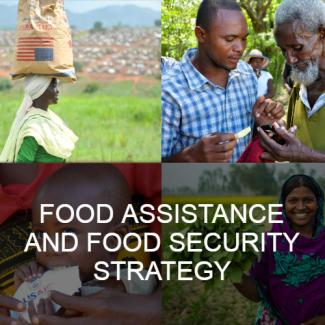USAID leads international food assistance efforts within the U.S. Government. USAID provides life-saving emergency food assistance to the most vulnerable during times of crisis, such as conflict and natural disasters, and through development activities, helps communities address the root causes of hunger so they can feed themselves in the long term. USAID provides food assistance through several types of programs:
Emergency Activities
During an emergency in which people face threat of imminent starvation, USAID provides food assistance in the form of food, cash transfers for food or food vouchers, which save lives and reduce suffering. USAID responds to emergencies when there is an identified need for food assistance and local authorities do not have the capacity to respond. USAID delivers emergency food assistance through two mechanisms:
- Emergency Food Security Program (EFSP): EFSP provides grants to humanitarian organizations in the United States and abroad to respond to food security emergencies, allowing them to purchase food within an affected country (local) or from nearby (regional), or distribute cash transfers for food or food vouchers to those most in need.
- Title II: Title II of the Food for Peace Act primarily provides U.S. food to those suffering from hunger or starvation.
- Essential Complementary Activities: Through both Title II and EFSP, essential complementary activities enhance the overall effectiveness and impact of emergency food assistance described above, and contribute to the stabilization of household/community availability of, access to, and utilization of nutritious foods. These include, but are not limited to, prevention and/or treatment of acute malnutrition; agriculture and food security; water, sanitation and hygiene (WASH); capacity-building support; gender equity; youth empowerment; and disaster risk reduction.
Development Activities
USAID provides development food assistance to reduce food insecurity among vulnerable populations and help build resilience in communities facing chronic poverty and recurrent crises such as drought. These USAID development activities tackle food insecurity holistically and look beyond food to address the root causes of hunger and malnutrition. The primary purposes of development food security activities are:
- Reduce chronic malnutrition among children under two years of age and pregnant and lactating mothers.
- Increase and diversify household income through agriculture and other livelihood initiatives.
- Strengthen and diversify agricultural production and productivity to build resilience and reduce the need for food assistance.
Nutritional Support Activities
USAID provides small grants to U.S. non-profit and public international organizations to diversify the types - and nutritional quality - of U.S. foods available for Title II programming.
- International Food Relief Partnership (IFRP): A sub-program of Title II food assistance, IFRP provides small grants to predominantly faith-based groups to produce and distribute ready-to-use supplementary food and dried soup mix in primarily institutional settings such as health clinics, schools and community centers.
Related Links



